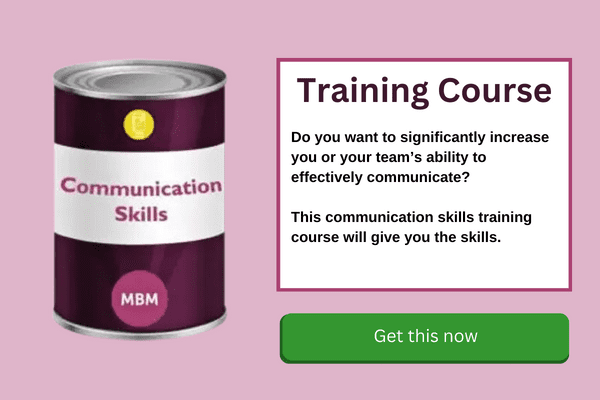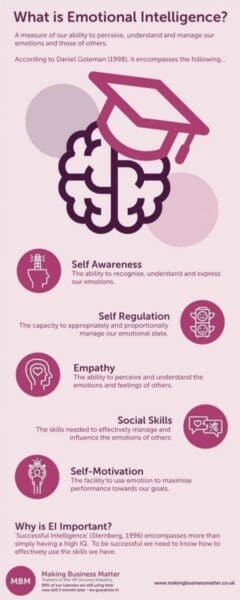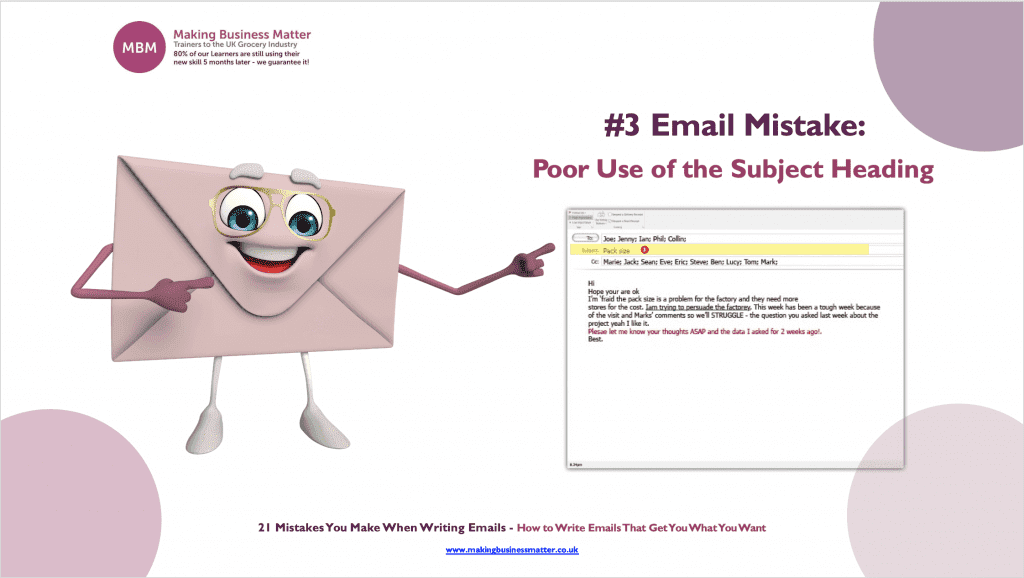What is a Communication Barrier?
Communication is the backbone of the social, political, and economic organisation of society. In business, it plays the central role in turning ideas into actions that create whatever has to be delivered to the end consumer. If ideas are not well understood because of some barriers to effective communication, then executions in the supply chain do not achieve the desired results.
Indeed, through communication, employees are motivated and inspired to do their best and help the organisation deliver to its customers. When we fail to communicate effectively, conflict arises typically. Then our communication follows the fight or flight principles, the passive-aggressive or the assertiveness-cooperativeness (Thomas-Kilmann conflict) model.
Therefore, understanding the barriers of communication and how to overcome them is really important for both an organisation as well as the people who work for it. A communication barrier is anything that either makes it hard for us to receive and understand a message or makes it hard for others to understand what we are trying to say to them.
Communication barriers exist in informal and formal settings. In this case, informal settings are socialising meetings that bring together family, friends, acquaintances, or even strangers. Meanwhile, formal settings happen during business transactions, company meetings, or public institutions sharing information for service delivery or diplomacy.
Jump Menu:
- 1-Physical Barriers
- 2-Emotional Barriers
- 3-Language Barriers
- 4-Physiological Barriers
- 5-Poor Information Systems
- 6-Cultural Barriers
- 7-Different Backdrops
- 8-Ambiguity
- 9-Too Much Information to Process
- 10-Poor Listening Skills
- 11-Lack of Mutual Trust and Goodwill as a Barrier to Communicating Effectively

Effects of the Types of Barriers
The effects of barriers to effective communication depend on the setting in which they occur. For example, in businesses, they can easily result in financial losses.
In social settings, they can lead to misunderstanding and conflicts. Indeed, in international diplomacy, barriers to communication can so easily lead to armed conflicts. Communication barriers in global business have resulted in low trade interactions between different regions.
Due to their effects, organisations and individuals must identify barriers to communication and have the mechanisms to avoid or mitigate them.
“You know that communication is good when people know what they’re doing and why it’s important.”- Professor Phillips.
The following are 13 types of barriers of communication and how to overcome them:
1. Physical Barriers
A physical barrier to effective communication is anything tangible in the real world whose presence or absence makes communication difficult. In the world before modern technology, physical barriers to effective communication were mainly the things in the environment that were an obstacle to moving a message from point A to point B.
That includes distance between the sender and the recipient as well as natural physical barriers like rivers, lakes, and wildlife infested landscapes that messengers had to pass through. In today’s world, however, physical barriers to communication include the lack of appropriate hardware such as computers and phones as well as the necessary software such as video conferencing applications and file-sharing systems. It also includes the lack of reliable network connectivity.
There is another kind of physical barrier to effective communication, and that is the lack of easiness when team members are in the presence of one another. In particular, how juniors feel when meeting older people.
‘My door is always open.’ My old boss used to say. He was right, it was. But the barrier was that you had to get up and go see him and put on your ‘Speaking to the boss’ head. It was never just a chat. More, I’m going to see the boss.
People Managers of today may not have offices, which created significant physical barriers to effective communication. Indeed, the open-plan office is the way forward. Still, there can be difficulty when it comes to informal confidential chat.
When I worked at Sainsbury’s Head Office at Stamford Street, there was a separate canteen for Senior Managers. And that was a physical barrier! The offices were almost ‘rabbit warrens.’ Screens around each desk making corridors. The debate on open-plan carries on.
Within an organization, overcoming physical barriers to effective communication includes identifying as many as possible, looking for solutions available, and, when necessary, setting aside the budget needed. It also includes having a plan to deal with issues to do with habits.
2. Emotional Barriers
Emotional barriers to effective communication, unlike physical barriers to effective communication, are the feeling that we have that might become an obstacle to hearing what others say or stop us from passing ideas to others. Our emotional state and attitudes can be shaped by both the people we communicate with or the message’s content.
For example, we might dislike a speaker or hold anger against them because of what they did prior. Either of these is likely to make us have a confirmation bias towards what they are sharing. Many times dislike the message because we already dislike the messenger. We also often tune out if we don’t like the message itself.
Other emotions such as fear, anxiety, and sadness can affect how we communicate with others and, in particular, hinder good communication. We can’t get around the fact that we are emotional creatures. It’s what drives us to do what we do because we are passionate. It also means that our emotions can take over. It is important, though, to develop ‘Emotional Intelligence’ in the team.
What is Emotional Intelligence?
It is our ability to perceive, understand, and manage our emotions and those of others. It means that we can become self-aware, regulate our feelings, be empathetic to others, and have the social skills to manage how others feel (Click on the image below for a larger PDF version).

In a nutshell, how you overcome emotional barriers to effective communication is to identify and acknowledge the feelings we have about people and the messages they share. If it is essential that we have to listen to them, either because it is our job, we should attempt to be objective.
Often it is the speaker’s responsibility to take care of possible negative feelings that might exist before they proceed to the substantive matter of communication or meeting. If listeners are anxious or fearful, they should try to assure them.
3. Language Barriers
Language barriers to effective communication are the inability to understand one another because of not sharing the same language or misunderstanding because of the variation in the language’s knowledge. It is evident that if two or more people don’t speak the same language, they will struggle to share ideas in a meaningful way.
But this is not any worse than when they speak the same language, but they understand different variations in accent, word choice, and grammar. Every language has a colloquialism that particular sections of society use. People in these situations can assume that they are communicating while, in the real sense, they are facing significant misunderstandings.
The way to overcome language barriers is to seek a translator’s help when necessary, especially in formal settings. Within an organisation, the solution could be having a policy on what language should be used when handling official matters such as meetings or talking to clients. At a personal level, one should never assume they understand or have been understood. Any small doubt calls for seeking clarification.
In our Category Management training course, we talk about terminology. We have it as a session because of the importance of the Category Managers realising the significance. If someone in the industry uses terminology, it is normally a sign that they are making up for a category’s weakness.
For example, a cooked meat product that the suppliers and retailers refer to as ‘4 x 4’, because it is four inches by four inches. The consumer would never use this term. What would they call it? ‘Sandwich ham’.
The industry people use this terminology to differentiate this SKU (product) from other similar products. Might this be masking the problem that there are too many similar products in the category? People use jargon because they didn’t realise they were. We also can use jargon to continue the mystery of our job because if we remove the mystery, people might find that it’s not that hard.
4. Physiological Barriers
These are difficulties in sending or receiving information caused by the lack of one or several cognitive abilities. These include poor eyesight, hearing difficulties, and even general ill-health. Some people struggle with different kinds of disabilities, but they can deliver anyone else if the barriers are removed.
The way to fix this kind of barrier to effective communication is to make organisations aware of them and develop policies that take care of them. For example, if the organisation can have its employees learn sign language to make those who rely on its part of the conversation. It could also include having the appropriate software that makes the digital content accessible to people with sight impairments.
5. Poor Information Systems
Systems that do not work well can hinder the flow of information in an organisation. And that can result in failures, mistakes, and oversights. Information systems are in particular critical in assigning and managing tasks.
It might happen that, for example, when one person is done with a task and needs to pass it to the next person, that communication fails to happen. The first person assumes the second person knows they should take over the project after they are done, and the second person might assume that the first person is not yet done and will alert them when they are done.
This misunderstanding and breakdown in communication can lead to missed deadlines and a client getting a bad experience. A simple project management tool like Trello provides an effective way for team members to communicate about the assigned tasks. Communication systems in most organisations now include social media.
When using social media, the barriers to effectvie communcation include most others in this list, particularly language, emotions, culture, ambiguity, lack of trust, and goodwill, and distractions. We also don’t have the privilege of the body language and tone in the text.
Another system that most people and organisations use is email. When we use email, just like social media, we miss the tone and the body language, and it’s guesswork as to whether they are annoyed or just typed it in a hurry.
Lack of clarity becomes a significant barrier to effective communication when using email and other communication systems. The advantage of the passive-aggressive is that they can hide and be ‘Keyboard Warriors.’
In our paid webinar ‘21 Mistakes You Make When Writing Emails – How to Write Emails That Get You What You Want’, we talk about how much we use email badly. For example:
Mistake #3 is ‘Poor use of the Subject Heading.’ This is what will grab their attention, or not when the email shows on their screen. Use it like a newspaper headline to get their attention.

6. Cultural Barriers
These are misunderstandings in communication that occur because of differences in the way people see the world and handle circumstances because of where they have been brought up and socialised. The key communication barriers in multicultural working environments come from different beliefs, taboos, and meanings assigned to signs.
For example, someone from South Asia would shake their head as a gesture of agreement. Meanwhile, someone born and brought up in the UK is likely to interpret that as a sign of disagreement.
How to solve cultural barriers to effective communication is to encourage team members to learn about other cultures, especially those they are likely to contact. An organisation should create an environment that enables different cultures to co-exist.Different cultures have ways of being that they don’t know to exist. Here are a few we have grabbed from ‘The 23 strangest habits you’ll pick up after living in 23 different countries`:
- Japan: Examine a business card or hand over money as if it were about to explode.
- Brazil: Ask people if they want to have a shower way too often.
- India: Haggle all the time, and without ever even saying a price.
- Germany: Tell the truth so much it hurts.
7. Different Backdrops
When two parties share ideas, some truths are assumed to be known by both, and therefore no effort is made to clarify them first. Often these backdrop truths are what we use to interpret the ideas we share. For example, a team manager might say to an employee something like ‘you need to meet the sales goals.’ The assumption is that both the team manager and the employee know exactly what the goals are.
In their book Made to Stick, Chip and Dan Heath popularized the term a ‘curse of knowledge,’ which basically means expecting that someone sees things the way you do and they turn not to because you have a lot more background information than they do.
The way to solve this type of barrier to communication is to encourage team members never to assume anything. To always provide sufficient background when communicating and always simplify ideas to the very basic for easy understanding.
“People are not mindreaders; a good communicator will spend some time explaining the whole story”- Dr. Lynda Shaw says,
8. Ambiguity
This happens when the speaker uses words or constructs sentences that can be interpreted in more than one way. Speakers often don’t realize that their message can be interpreted in several ways because, in their minds, they are focused on the one meaning that they intend the listener to hear or the reader to understand.
Indeed, in some way, this barrier is similar to the ‘curse of knowledge.’
The way to solve this barrier to effective communication is to encourage team members to always put themselves in the shoes of those listening to them or reading their content. Team members should also be encouraged to develop attention to detail. That includes not only choosing their words very carefully when speaking and writing but also to account for the function of each.
Informal communications, at least one other person must look at the content before it is published. It is important to point out that if the writer and the editor are usually in the same environment, they might miss this communication barrier.
9. Too Much Information to Process
While we can often multitask or consume a lot of content at the same time with little problem, this can reduce our effectiveness at understanding the important details in the communication. Indeed, handling a lot of information sources at the same time can lead to an overload. This, in addition to missing details, one might become really tired, frustrated, and uninformed.
The best way to overcome these type of barriers to effective communication is to make sure people focus on one communication source at a time. It is also essential to create a process that ideas are received, looked at, and filed. There should be a queue of some sort.
We should also appreciate that we are all Individuals and think differently.
I didn’t fully appreciate that people are different in how they process information until I became a practitioner of HBDI. The Herrmann Brain dominance Instrument. A similar psychometric profile to Myers-Briggs, Disc, and others you may have heard about. HBDI measures how you prefer to think.
Some prefer to think in Facts, others in Form, some in Future, and the remainder in Feelings.
- Facts People: Think of someone that loves excel and works to 3 decimal places. Know one of them? They make good engineers.
- Form People: They like structure. They talk about ‘Steps’ and ‘Actions’ a lot. Gantt charts are their thing. Good Project Managers.
- Future People: Buzzing with ideas. Maybe their head is in the clouds. They make great entrepreneurs because they aren’t afraid to take risks.
- Feeling People: You know that person that touches your arm when they talk. That’s them. In touch with their feelings. Make great teachers or nurses.
10. Poor Listening Skills
It happens when we fail to actively listen to what others are saying to us either because we think we already know what they want to say or we don’t expect anything of value to come from them.
Sometimes it’s just that we have not trained ourselves to listen, or we do so while doing several other things. Maybe working on an urgently needed report or listening to music while someone is telling you something.
How to fix this barrier as an organization is to identify it and talk about it or even bring in an expert to train team members on active listening.
At a personal level, whenever you are talking to someone, stop doing everything else. Also, look at the person as they talk, not only because that makes you attentive, but also because it tells them that you are listening and take what they are saying seriously.
11. Lack of Mutual Trust and Goodwill as a Barrier to Communicating Effectively
When you are uneasy about someone, maybe because you think they are looking to take advantage of you, you will likely focus more on that threat than what they are saying. You must trust the person you are talking to for the barriers to effective communication to be removed. That can not always happen because we play a game of trying to take advantage of one another in many situations.
However, it is important to cultivate an atmosphere of trust and goodwill amongst team members within the organisation. This will help people relax before one another, which is likely to improve communication and sharing of ideas.
Trust is made up of 4 components; Credibility, Reliability, Intimacy, and Self Orientation. This formula shows how they first together.
To trust someone, you need to believe what they say on a topic is correct – Credibility. Know that when they say they will do it, they do – Reliability. Share some stuff about each other to each other – Intimacy.

To be effective in your communication trust will really help. By ticking all four parts of the trust equation, you will open up to a colleague and share more than if they are new and unknown to you or do not trust them. Communication with people you trust is more effective because the assumptions you make about each other when you speak, read, or listen to them, is that they are genuine.
12. Social Conflicts
If people have collided over other things before, it is most likely that communication between them will be strained. Many times the conflict is not personal. It can be a conflict between the classes to which those in the conversation belong to.
For example, team members might belong to different political parties. The happenings in the political arena can easily spill into the team, and the conflict can make it hard for some to understand/perceive what their enemies are saying.
To remove this type of barrier to effective communication, the organisation needs to embark on team-building campaigns. At the personal level, one should try to overcome their subjective view of others and also separate conflicts from the message. Always try to judge a message or an argument on its own merit.
Social conflict at the place of work can also lead to disengagement ’. Disengaged employees will find a problem for every solution. They will not see the best in people or their job. Indeed, fully engaged employees can be communicated much more effectively.
13. Distractions
If so many things are happening in an environment where you are holding a conversation, it is very much possible for one or both parties to lose thought and argument.
How to deal with this type of barrier to effective communication is to ensure the environment in which you hold conversations, especially those that are critical, is free of distractions. That includes shutting down computers, putting away phones, and shutting the door.
Conclusion of Barriers to Effective Communication
If you make an effort to deal with all types of barriers to effective communication when they happen in your environment, you are likely to have much better success in sharing ideas, which can easily translate to improved performance.
The goal is to execute well each of the following elements to overcome the barriers to effective communication:
- 1 – Right information.
- 2 – Right time.
- 3 – Right amount.
- 4 – Right format.
Action: For even more useful content on communication, check out our ultimate guide on communication skills.




